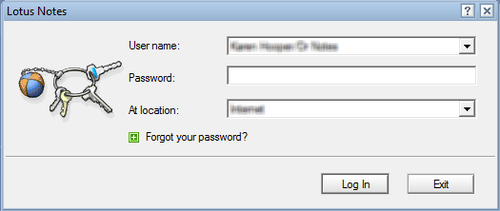First impressions always count and, when you start Lotus Notes, there is no exception. You might notice that Lotus Notes is much more than just e-mail! There are many feature-rich tools available—for example, there is a free office suite application called Lotus Symphony that can be used as an alternative to Microsoft Office for those who just need the basics with an office suite. You will see the ability to create documents, spreadsheets, and presentations if Symphony is selected while installing Lotus Notes. You can also export each of those documents to PDF, HTML, or JPEG format if required.
Lotus Notes also has a Notebook application. This application allows you to create notes that can include pictures, attachments, ideas, and so on. It is a great place to store information that is just for you. It also has an inbuilt chat and presence capability called Sametime, along with an inbuilt RSS feed reader, a Widget panel, calendaring and scheduling capabilities, and applications if your organization has developed any or purchased them.
In this chapter we will focus on the client and will explore the following:
- Starting and shutting down Lotus Notes
- Open List
- Thumbnails
- Home Page
- Shortcuts
- Window tabs
- Toolbars
- Sidebar
- Lotus Notes Browser
- Preferences
Starting Lotus Notes is similar to starting any application on your computer; simply go to Start | Programs | Lotus Notes. You may also have a shortcut to Lotus Notes in your taskbar or on your desktop.
As Lotus Notes is starting up, in most cases we will be prompted for a password. Lotus Notes is a very secure program; it requires us to verify that we are who we say we are, the same as when we use our PIN number with our ATM card. There are variations that can occur with the security within Lotus Notes in some organizations. Lotus Notes may start without a password prompt but be assured the security is still just as strong.
The following is an example of the password prompt dialog box. In the User name field, our name will be listed. Other names may be listed as well if there are multiple people using Lotus Notes on the PC. The At location field is where we select the location we are currently accessing Lotus Notes from. For example, we may be in the office or working remotely. If we have forgotten our password, we can expand the Forgot your password section as shown in the dialog box for instructions on what we need to do.

